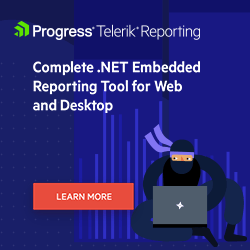Plan Embedded Reporting Implementation in 5 Easy Steps

Follow these five steps to get up and running with embedded reporting so you can empower business users to create, edit and style their own reports.
Embedded reporting is a powerful tool that can turn business users into report creators, allowing them to create, edit and style reports and analyze business data without relying on developers and IT staff. Here are some steps businesses can take to implement embedded reporting and easily empower business users:
Step 1: Identify the Reporting Needs of Your Business Users
Start by understanding the types of reports that your business users need to create. This will involve meeting with them to understand their requirements and the types of data they need to analyze.
Step 2: Choose the Right Embedded Reporting Tool
Select an embedded reporting tool that is user-friendly and intuitive, with a drag-and-drop interface and powerful but lightweight report designer that allows business users to quickly create reports without any coding experience. In addition, choose a tool that can easily integrate with your existing applications and systems.
Step 3: Provide Initial Setup and Enablement
The involvement of developers is very minimal—just during the initial integration of reporting. This initial stage can be done in several minutes. Then business users can take the helm by using the web report designer to create reports on their own.
To simplify the process, developers can help them to generate their first report. This will help them feel comfortable with the tool and confident in their ability to create reports on their own. Then they can use documentation and resources with the chosen embedded reporting tool.
Step 4: Advise Your Business Users to Establish Date Governance Policies
Establish data governance policies to provide the right data to the right users. Deliver a training or how-to guide to your business users with your organization-specific data sources like Excel or JSON filer or web services exposing these or even SQL connections and how to access them. Even better, look for an embedded reporting solution allowing predefined data sources for a start and supporting sharing data sources among reports. This will lower the initial learning barrier for your end users significantly.
Step 5: Encourage Collaboration
Encourage collaboration among your business users by allowing them to share their reports with each other. This will help them learn from one another and improve their reporting skills. Keep track of how your business users are using the reporting tool and offer them advice if needed. This will help ensure that they are getting the most out of the tool and are able to create the reports that meet their needs.
Every great journey begins with the first step: Starting a conversation about embedded reporting with your end users can help you understand their needs and requirements.
Once you know their challenges, it will be easier to explain them the benefits of embedded reporting. Help them understand how embedded reporting can support them make data-driven decisions, gain insights into their data and save time.
Demonstrate the tool or ask the provider to make a demo of the embedded reporting tool you are considering. This will help your users understand how the tool works and how it can help them. Provide help and support them in building their confidence with the tool.
Ask for feedback after they have used the embedded reporting tool. This will help you understand how they are using the tool, what features they like and what improvements they suggest.
By following these tips, you can start a conversation about embedded reporting with your end users and get them excited about using the tool to easily gain business insights on their data.
Finally, never forget that you are not alone on this journey. If you choose an embedded reporting tool from a trusted partner that comes complete with resources and support, you can be sure you’ll have everything you need to easily enable your business users to create reports themselves. It’s just a matter of choice.
Ready to Take Advantage of Embedded Reporting?
Progress Telerik Reporting provides all the tools you need to embed the rich, interactive reports your users need in order to analyze and understand their data right into your users’ applications (including letting your users export the results into more than 15 formats, either to distribute or integrate with other analysis tools). Telerik Reporting then lets you go further and empower your users with a fully functional Web Report Designer to create the reports they want without ever leaving the applications where they’ll use their reports.
You can leverage these easy-to-use tools in both any client-side web application environment (HTML5/JS, Angular, React, Vue or Blazor) and any .NET application (web or desktop: ASP.NET Core, ASP.NET MVC, ASP.NET AJAX, WinForms and UWP).
If you still have not tried it, you can start a free trial to take a closer look. A renowned support service and an array of resources will help you along the way.
Stay tuned for more practical tips.

Galina Jordanowa
Galia is a Senior Product Marketing Manager for Telerik UI for Blazor, Telerik UI for .NET MAUI, Telerik Reporting, Telerik Report Server and Telerik DevCraft at Progress. She has 23+ years in marketing, improving the sales, performance and reputation of a great number of international companies. Outside of work, she enjoys reading, psychology, mountain climbing and music. Follow her on LinkedIn.

